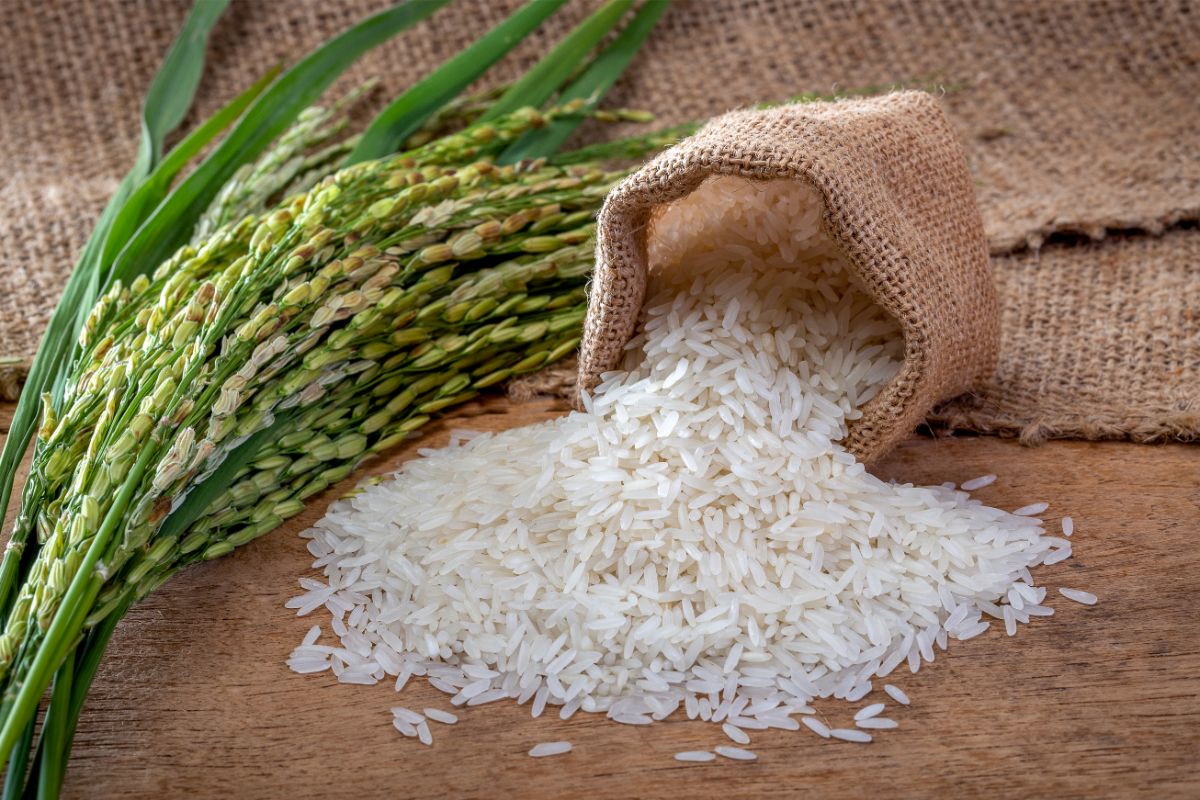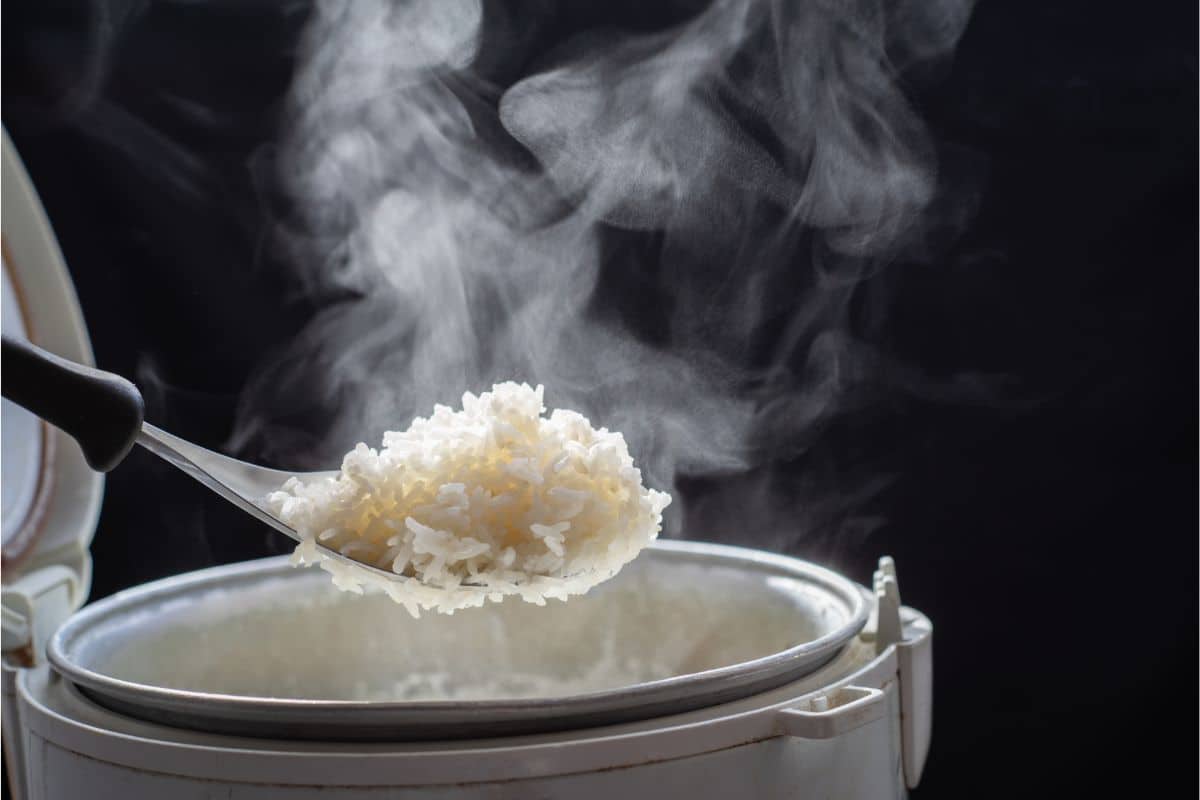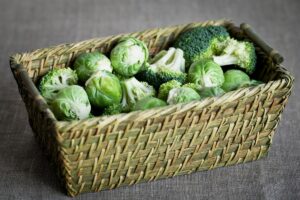Many amateur chefs can often struggle to tell the difference between different varieties of the same kind of food.

And, more importantly, don’t appreciate how those differences make big changes in the final food product.
It’s obvious in some foods, such as different cultivars of vegetables, fruits, and nuts.
But dig a little deeper, and start looking at other food groups, like grains, different pasta varieties, and even condiments like mustard, and you’ll find that it can be difficult to understand how and why some of these are different.
Rice is another case like this. On the one hand, most rice share the same traits. A piece of cereal grain that is pointed, and is usually boiled when it needs to be cooked.
But look a little deeper, and you’ll find a ton of different rice varieties. Long grain rice, brown rice, wild rice, Indica rice. And, importantly for this guide, jasmine, and sushi rice.
In this guide, we’re going to go into a little more detail about these last two types of rice, specifically. We’ll go over what makes them different from each other, and what recipes they’re typically used in.
Jasmine Rice
So, let’s get started by taking a close look at one of the most popular grains of rice that you’ll find across the world.
Jasmine rice is instantly recognizable by its thin, pointed shape, and longer size. It’s pretty close to what most people would consider to be a classic rice grain.
However, it is different from standard white rice, as it is slightly thinner than white rice. Plus, jasmine rice can also come in shades of brown as well as rice.
Probably the things that most people know this type of rice for is its distinct smell and flavor, however.
When cooked properly, Jasmine rice has a strong floral smell to it, like the jasmine flower that it is named after.
It also has a similar mellow flavor, with a nutty quality to it that stays on your palate unless you season it with additional ingredients.
Many people often choose to leave their jasmine rice unseasoned (aside from maybe a little salt or butter), its natural flavor is that good.
It’s perfect for curries that have strong flavors that you don’t want to overpower.
This particular taste and smell is such a big characteristic, that jasmine rice is sometimes known as ‘aromatic rice’.
In terms of texture, jasmine rice generally retained its shape and form once it has been cooked, but has a slightly sticky texture to it when touched.
This makes it quite a good rice to use if part of a recipe consists of forming your rice of choice into a shape.
Jasmine rice doesn’t have a specific country of origin, but it is commonly used in a variety of East and South-East Asian cuisines, such as Thai, Vietnamese Laos, and Cambodian cuisine.
Sushi Rice
So, with jasmine rice covered, let’s take a look at its counterpart in this guide.
Sushi rice, like the type of food that it is named after, has become increasingly popular over the last few years. You’ll have seen this type of rice used in sushi dishes.
But this is also the main rice of choice for meals like poke bowls, nigiri, and a ton of other classic Japanese recipes.
The most common thing that people will note about sushi rice is that it’s quite a different shape from traditional rice grains, being much more rounded both before and after it is cooked.
It is also only white, with other colors being very rare or nonexistent in commercial sushi rice.
Sushi rice can also retain a lot more water than many other types of rice can, which changes the texture dramatically into a much stickier rice variety.
This particular quality has made it incredibly popular for mankind sushi rolls out, as the rice can mold and hold its new shape very well, keeping whatever contents you’re using inside your bed of rice.
When it comes to flavor, sushi generally has a pretty neutral flavor to it, like many other types of rice.
You may detect elements of sweetness if your sushi rice has been preserved or flavored with rice vinegar, but that’s all you’ll get from standard sushi rice.
However, that neutral flavor makes it great for serving alongside fillings or food that are full of flavor, like fresh salmon, beef, avocado, crab, or whatever food you are serving it with.
Interestingly enough, while sushi rice is an incredibly popular ingredient to use in cooking these days, it is only associated with Japanese cuisine as a whole, making it a very specialized type of rice when it comes to cooking.
How Are They Different?
So, we’ve covered these rice varieties. Now it’s time to compare them to each other
Appearance
So, when it comes to appearance, it’s pretty easy to tell these two rice types apart.
Jasmine rice is considered a type of long-grain rice, looking much more like a standard grain, albeit perhaps longer and slightly thinner.
Sushi rice, meanwhile, is
Aroma

You’ll also find that the smells that these two types of rice give off are very different from one another.
Sushi rice has little to no aroma to it, except if it has been seasoned and cooked with rice vinegar extract.
Jasmine rice, on the other hand, is prized for its relatively strong scent, smelly like a combination of both nuts and the jasmine flower.
If your rice dish has this smell to it, then chances are that you’ve got a jasmine dish on your hands.
Flavor
The taste of these types of rice is also very similar to their aroma.
Jasmine rice undoubtedly has an overall stronger flavor palette, having a nutty flavor to it, and a smooth, buttery texture to it when eaten.
Meanwhile, that neutral smell that most sushi rice has is reflected in its taste, being very mild by design to allow you to focus on the fillings that are usually served alongside sushi rice.
Add to that the fact that sushi rice is almost always served at room temperature after cooking and that already mild flavor is even more subdued.
Health Benefits/Effects
This is a particular field that we haven’t covered yet, so it will be interesting to see how these different foods compare to each other.
Jasmine rice is not much different from other long grains of rice when it comes to nutrition, with only a slightly higher amount of fats in them than standard rice.
Sushi is very similar too, with a slight increase in vitamin B amounts.
Of course, being a grain that is high in carbs, most people trying to avoid empty calories tend to avoid both.
But if that isn’t the aim of whatever diet or meal plan you have, then you’ll probably want to opt for Jasmine.
Versatility In Cuisines
Because many food ingredients are often adopted, shared, or otherwise used by other cuisines, it’s not uncommon to find ingredients that can be used
Jasmine rice is used in a ton of cuisines, from Vietnamese to Loa, and can be a decent substitute in plenty more for standard white rice dishes.
Meanwhile, Sushi rice is only really made for Japanese cuisine. Obviously, nothing is stopping you from using sushi rice in some type of new recipe that you want to cook up.
But when it comes to the standard cuisines that it is typically used in, sushi rice is shockingly limited.
Final Notes – Which Is Better?
So, after going through all of these differences, what are our final thoughts on these two types of rice? Is there one that we can comfortably say is better than the other?
Well, to tell you the truth, the answer is simply, ‘it depends’.
Yes, after everything we’ve discussed, with its more potent flavor and aroma, and greater versatility in different cuisines, you may be tempted to say that jasmine is the better rice variety.
However, both its unique texture and its neutral flavor working better for the recipes it is used in, neither can replace the other.







